I’ve been enviously following the events at the recent International Ornithological Congress, held in Tokyo, Japan. One of the many interesting things that I ran across in my communications with the congress attendees was an online video game that challenges the viewer to spot a camouflaged bird egg in a short period of time. This video game, which is entertaining and rather addictive, is designed to follow the evolution and function of camouflage in wild animals and to explore how different types of camouflage work.
The guiding principle for camouflage is intuitive to most people: to blend in with the surroundings. The military uses camouflage to hide their troops and weapons, but it’s also used in civilian life to hide mobile phone signal transmission towers or ugly buildings. But the reverse is also true: some things, such as traffic signs and advertising, are designed specifically to stand out from the background.
Since we are well-acquainted with both camouflage and “anti-camouflage” in our modern world, it might surprise you to learn that scientists don’t know much about the types of camouflage that are most important for wild animals nor especially, how different sorts of camouflage affect survival. This is partly the result of two variables; the type of camouflage and the predator’s visual system that the camouflaged animal is trying to evade. Other challenges include the difficulty in simply finding these cryptic animals in the field for study and of course, the camouflaged animal’s mobility.
But the nests and eggs of ground-nesting birds don’t tend to move around, so they provide a good model system for investigating camouflage in the real world. To do this work, Martin Stevens, a BBSRC David Phillips Senior Research Fellow in the Centre for Ecology and Conservation at the University of Exeter, and Claire Spottiswoode, a BBSRC David Phillips Research Fellow in the Department of Zoology at the University of Cambridge, teamed up with Jolyon Troscianko, a postdoctoral fellow, and Jared Wilson-Aggarwal, a research assistant, both at Exeter.
This team is part of several other groups that investigate the sensory and evolutionary ecology in a wide variety of animals. Of the five senses, the Exeter group focuses on animal vision, anti-predator coloration (such as camouflage, warning signals, and eyespots), brood parasitism, and visual communication. The avian brainchild of this collaboration is “Project Nightjar”, which uses lab and fieldwork -- and citizen science! -- to investigate how visual systems are related to nightjars, a group of ground-nesting birds that rely on camouflage to keep themselves, their nests and eggs, hidden from predators.
The online video game -- the citizen science aspect of this project -- is what I ran across when chatting with Dr Stevens on twitter and via email about the team’s research (he tweets at @SensoryEcology). Being an avid birder as well as an avid gamer, I had to give this game a go. And yes, it’s educational and thought-provoking, but equally important, it’s great fun.
“The online games seemed like a great way to tell people about how exciting camouflage and bird behaviour/evolution is, in addition to being genuine science experiments”, writes Dr Stevens in email. To create the online games, Project Nightjar teamed up with Dave Griffiths, a game designer at FoAM Kernow in Cornwall, who made three online games for them.
The first two online games that were developed challenge people to find either hidden nightjars or their nests.
“The main twist with these [games] is that we can change the display to simulate the visual system of different predators, such as a trichromatic primate (which has three types of cone cell in the eye to see colour, as do humans), and a dichromatic predator like a mongoose (just two cones involved in colour vision and so sees fewer colour types). By doing this we can analyse how the colour vision of the predator affects how effective camouflage is”, explains Dr Stevens in email.
Some visual systems are better than others at detecting hidden objects in particular environments.
“We’re just finishing the analyses here but we’ve found that colour vision type does affect how different types of camouflage are detected -- sometimes trichromats are better, sometimes dichromats, depending on how much potential colour information there is in the environment”, writes Dr Stevens in email.
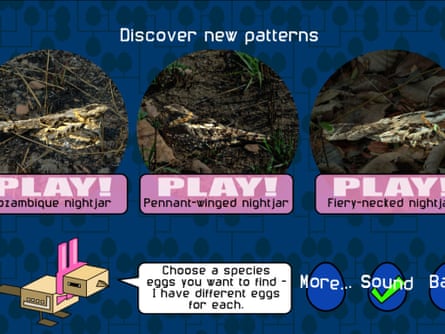
The third game, egglab -- the one I’ve been playing -- is somewhat more complicated. It is designed to test how camouflage patterns and colours evolve to become harder to spot in different environments (read about it here). As people play this game, the eggs are ranked in terms of detection times, with those eggs that take longer to find being better hidden. Just as in the wild, the most obviously visible eggs die, whilst the most effectively camouflaged eggs survive and produce chicks. These chicks grow up and then lay the next generation of camouflaged eggs that form the next round of play. Of course, as in real life, some of those eggs have mutations that change their patterns and colours.

“Over time, we expect to see camouflage become better, and to determine what types of camouflage evolve. For example, on very variable complex backgrounds we might expect disruptive camouflage that breaks up the shape and outline of the egg to arise, whereas on simple backgrounds eggs should just match the specific colours and patterns there”, explains Dr Stevens in email.
Although the human visual system is the selective force in this game, the researchers think their results will be broadly applicable to a wide range of visual systems, since the game is documenting the sorts of camouflage that evolve in different habitats and the strategies involved.
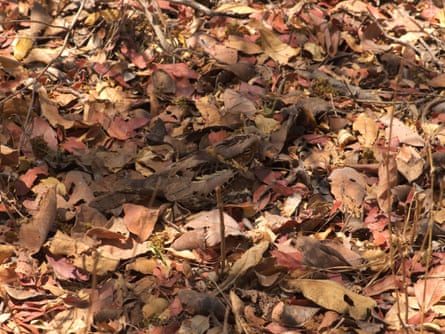
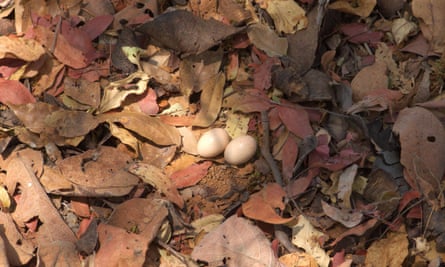
The artificial egg evolution game has three versions; each version tests one of three species of nightjars that have different nesting strategies in the wild. The fiery-necked nightjar nests primarily on leaf litter under dappled light created by a canopy of trees (above and left).
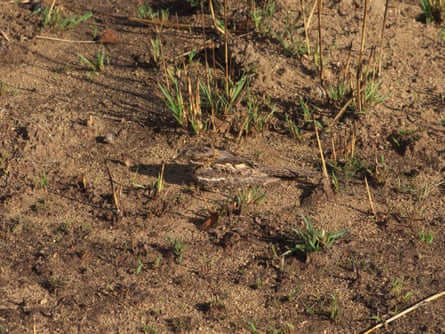
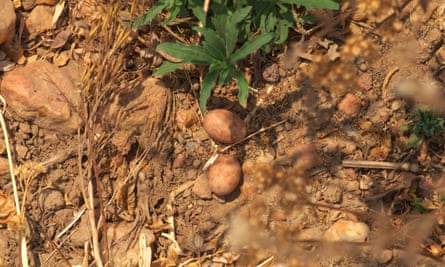
The Mozambique nightjar nests primarily on open areas of burnt grassland (above and left), whilst the pennant-winged nightjar, which is the non-specialist ground-nester in this group, nests on a range of these two background types (below and below left).
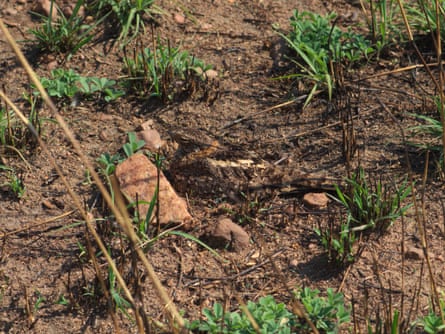
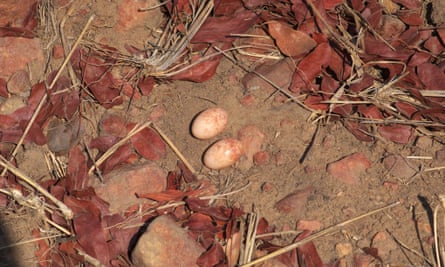
Each version tests 60 populations of eggs in total in separate runs of the game (there are 20 populations for each version/bird species). Each population comprises hundreds of eggs that are evolving separately.
“In total across all populations we’ve tested something like 400,000 individual eggs so far”, writes Dr Stevens in email.
“By splitting the game [into separate species-based versions] like this we can analyse how different types of camouflage evolve in different habitats, and what happens when some species specialise and nest on one background alone whereas others are more generalist and nest on several background types and so can’t match any one background so closely”, writes Dr Stevens in email.
The first two games had roughly 15,000 people playing them. According to Dr Stevens, the artificial egg evolution “egglab” game has about 10,000 people playing it so far, testing hundreds of generations of camouflaged eggs.
“Overall, I think it’s reasonable to say that none of this -- neither the field project or the games -- have ever been done so extensively before in studies of animal camouflage,” writes Dr Stevens in email.
“Especially not when quantifying colouration to predator vision and using such large scale artificial evolution experiments. We’ve also been really keen to make the work as accessible and open as possible to wider audiences”.
The best part? You don’t have to be a birder or bird-lover to love this game. Anyone who enjoys video games can contribute to this citizen science study -- and have fun doing so.
.. .. .. .. .. .. .. .. .. .. ..
When she’s not out birding or playing video games (ahem!), GrrlScientist can also be found here: Maniraptora. She’s very active on twitter @GrrlScientist and sometimes lurks on social media: facebook,G+, LinkedIn, and Pinterest.




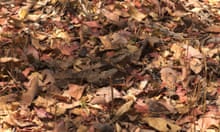

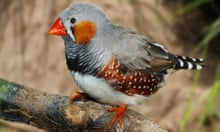
Comments (…)
Sign in or create your Guardian account to join the discussion